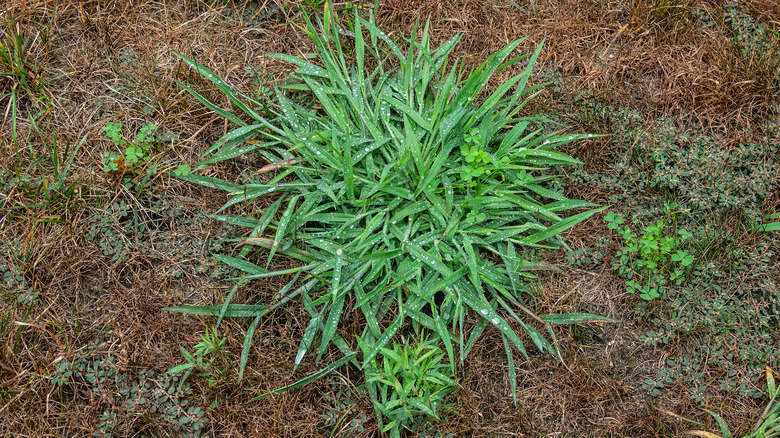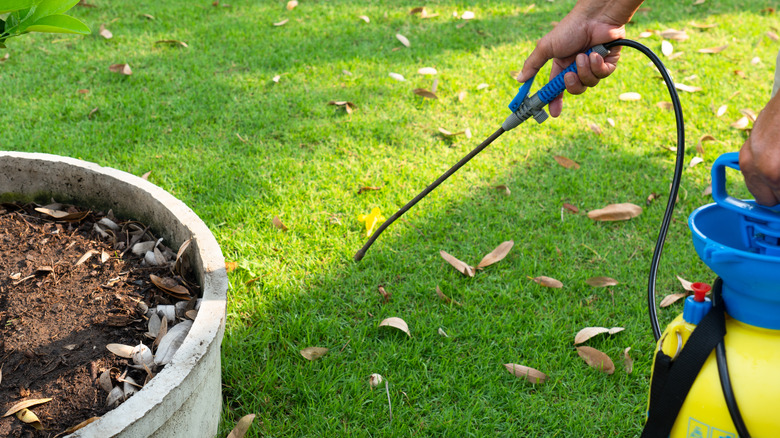Grass Or Weeds: How To Tell If The Grass In Your Lawn Is Actually A Problem
The great American lawn is a concept that has evolved from a luxurious status symbol for the wealthy to what feels like a basic requirement for home ownership. Today, spending your weekends maintaining your lawn is considered the norm in many communities, and owning the greenest grass with the fewest weeds on the block is a point of pride. While some common lawn weeds — like dandelions and clover — are easy to spot, what about the ones that look like slightly different types of grass? It all comes down to small details, like vibrancy and glossiness.
Grassy weeds, including crabgrass and carpetgrass, can look almost identical to your intentionally planted lawn grass. You may wonder why you would worry about grassy weeds if they can visually pass as grass. The reason for identifying (and sometimes removing) these weeds is their potential to compete with your actual grass for resources. Consider this your guide to identifying and removing the grassy weeds in your lawn.
Keep off the grass: How to identify grassy imposters
Both desirable grasses and grassy weeds are typically part of the same family, so how is it decided which ones are weeds? The answer is quite simple: Any grassy plant that wasn't invited onto your lawn by way of intentional planting can be considered a weed. For lawn owners who tend to be a little more free-spirited and less stringent, a grassy weed can be defined by the fact that it competes with your lawn's planted grass for resources and thereby hinders its growth.
When checking your lawn for grassy weeds, keep an eye out for patches of grass that visually stand out from the rest. Inspect these patches for any slight difference in their blades of grass. If you aren't sure what you're comparing to, it may help to take some time to identify what type of grass you have. Grassy weeds tend to be a brighter shade of green than regular turf and will often have taller or wider blades. If you pluck a blade and hold it up in natural lighting, you'll notice that many common grassy weeds — like crabgrass — have a dull, matte finish rather than the glossy finish found on true turf grasses. Grassy weeds also tend to grow in large clumps rather than evenly spreading out across a lawn.
How to rid your lawn of grassy weeds
If your lawn already has an established grassy weed problem, the only real option for getting a handle on the situation is to apply an herbicide. Fortunately, there are now many grass-selective herbicides available at your local hardware or department store and on Amazon. If you find that your lawn's more stubborn grassy weeds are still hanging around, consider applying a non-selective herbicide to only the weeds (as these products will kill any plant material, including your grass).
Once you've removed the existing grassy weeds, your focus should be shifted to preventing them from returning. For perennial grassy weeds — which die off each winter and emerge again the following spring — applying a pre-emergent preventative product in early spring will stop the cycle. Both perennial and annual grassy weeds will be less likely to invade your lawn if it is healthy and well-maintained. This means deeply watering your grass from time to time as well as mowing it at a higher height to allow it to grow in thick and tall enough to block potential weed seeds from sun exposure. Lastly, be sure to fertilize your lawn at least once per growing season to ensure thriving grass than can stand up to grassy intruders.


